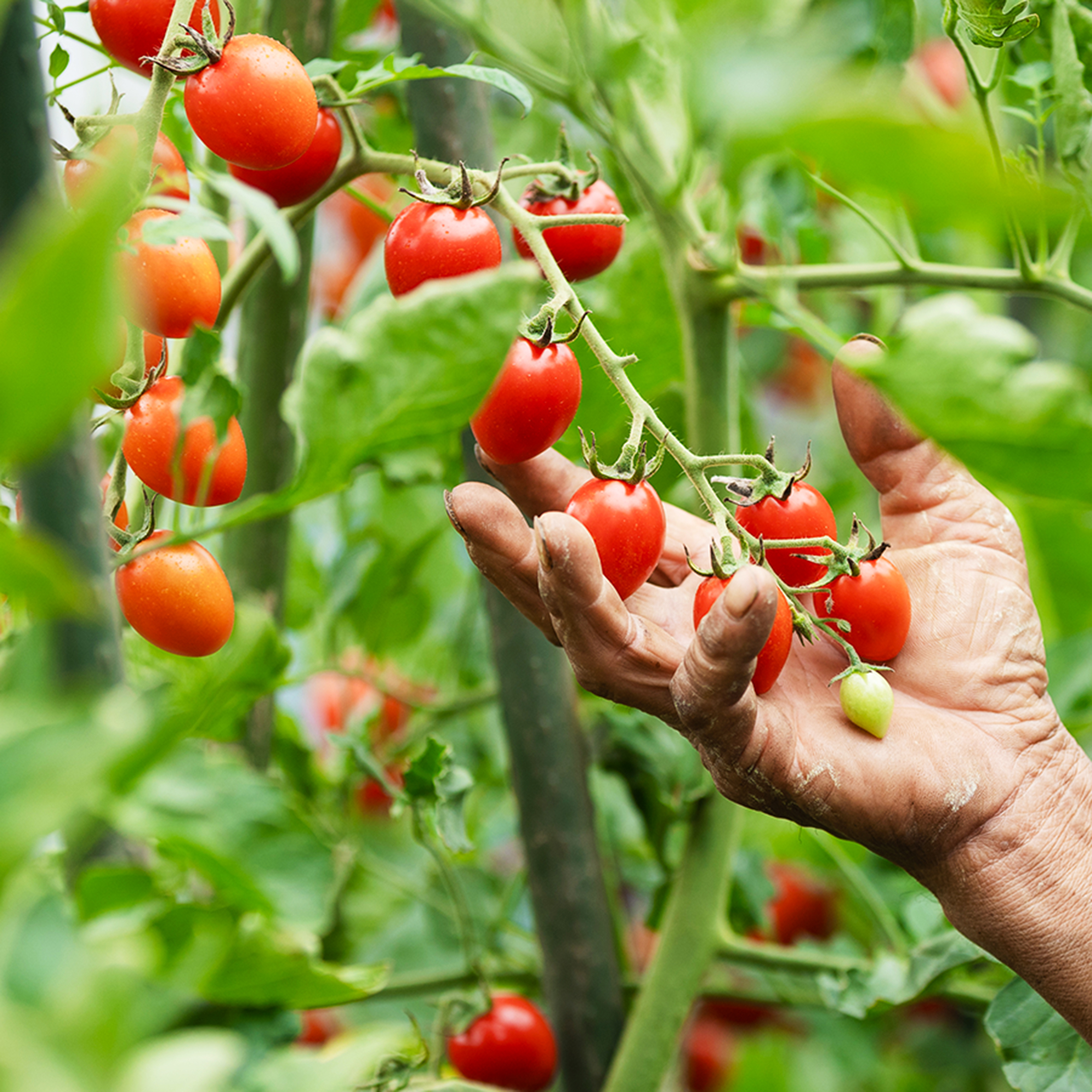Tomato Blight: How To Identify, Prevent & Treat The Most Common Types
There are several types of tomato blight that can get in the way of an abundant crop. Learn the signs to look for, treatment options, and preventative measures.
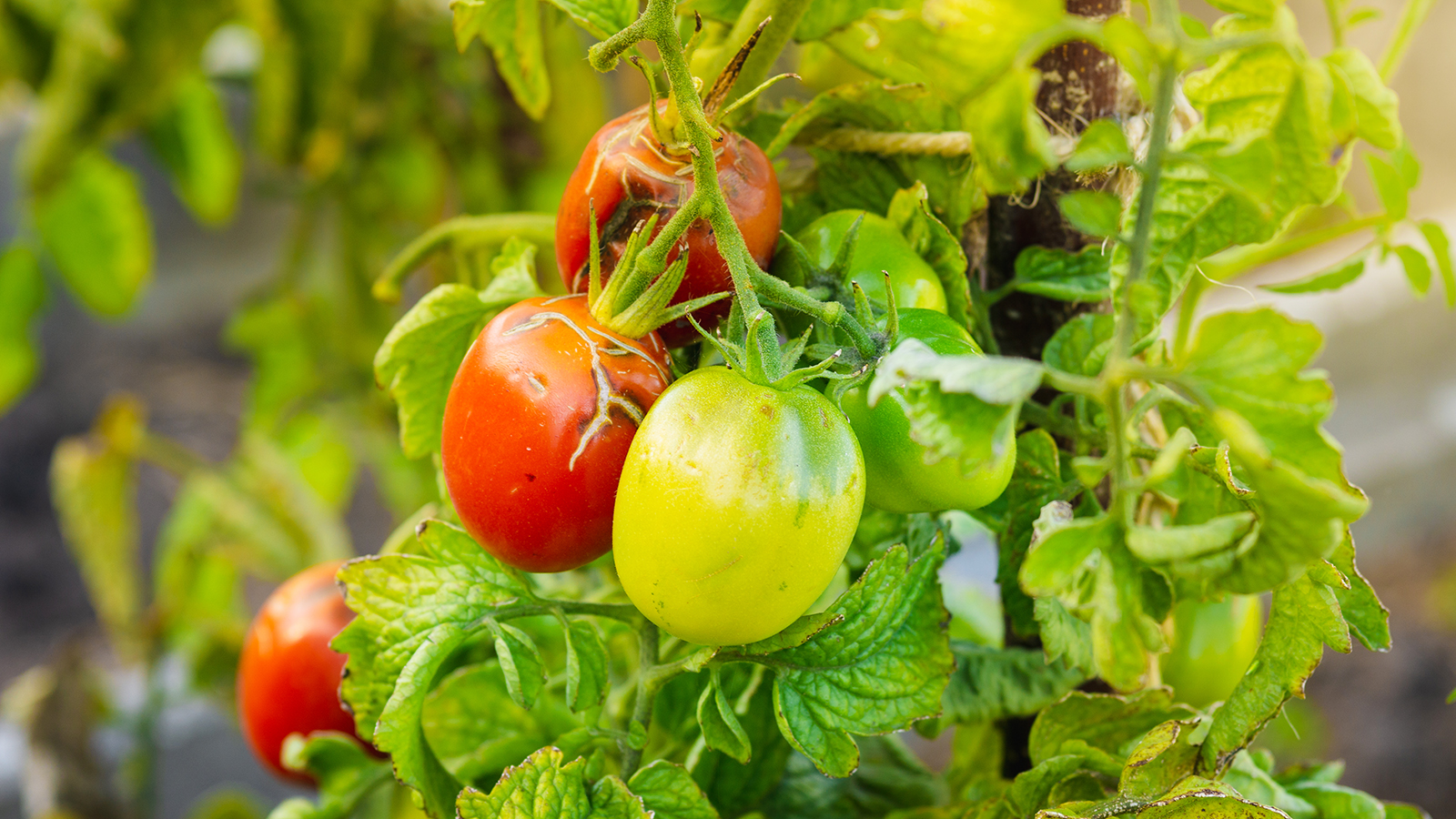
Tomato blight is a catch-all term for a group of serious fungal infections that affect the production and quality of fruit. The fungi attack tomatoes in different ways at different times, with symptoms varying depending on the type of fungus present. Like all fungi, they are spread by spores and require damp conditions to flourish.
With all tomato diseases, prevention is better than cure, so practice good hygiene and crop rotation. Once a blight on tomatoes takes hold, it's very hard to control. Identification is the first step, and once you know which type of blight you are dealing with, you can determine the best course of action.
Whether you're just learning how to grow tomatoes or have many successful harvests under your belt, don't let blight hold you back. Check plants regularly for signs and take action as soon as disease is suspected.
What is Tomato Blight?
Tomato blight is a fungal disease that affects foliage and fruit, resulting in reduced fruit production, damaged or dropped fruit, plant collapse, and even death of the plant.
While the symptoms of blight on tomatoes vary depending upon the pathogen causing the disease, for the most part, lesions will be found on the foliage and stems of the plant. As the disease progresses, the lesions often move upward from soil level and begin to affect fruit.
Blight is fostered by moist conditions with moderate temperatures. The spores of these fungal diseases often survive in plant detritus, host weeds, or on infected seeds or transplants and are then spread by rain, overhead irrigation, movement of infected soil or plant debris, or working amongst infected plants.
Types of Tomato Blight
There are three main types of blight to look out for: early blight, late blight, and septoria leaf blight. However, Southern blight is also an issue in warmer climates.
Gardening tips, videos, info and more delivered right to your inbox!
Sign up for the Gardening Know How newsletter today and receive a free copy of our e-book "How to Grow Delicious Tomatoes".
Early Blight

Early blight tomato disease is caused by the fungal pathogens Alternaria solani and Alternaria tomatophila. It affects stems, leaves, and tomato fruit, and can be found around the globe. Plants become infected when the lower leaves come into direct contact with contaminated soil, or when water drops splash upwards from the soil onto the leaves.
Symptoms of early blight usually appear after the first fruits have begun to form. Initially, dark brown to black lesions appear on larger, older leaves. As the disease progresses, the lesions grow, become chlorotic, and usually develop a concentric ring that looks akin to a shooting target or ‘bull’s eye’.
Eventually, plants become defoliated, and the fruit develops large, bruised spots and begins to fall. The fruit can be infected at any stage and will also have the tell-tale concentric ring pattern. As much as 30 to 50% of immature fruit may be lost. You can minimize fruit loss by harvesting any ripe or semi-ripe fruit as soon as you spot signs on the leaves.
Early blight has no cure, but you can slow the severity of the disease to minimize crop losses by removing infected leaves – you can safely remove up to a third of the plant's foliage. Dispose of leaves by burning them, and clean your hands and tools after touching infected plants. Water plants from below and keep leaves dry.
To prevent the spread of disease next year, burn the infected plants after harvesting, use early blight-resistant varieties, and practice crop rotation.
Late Blight

Tomato late blight disease is the least common type, but it is by far the most destructive. It is caused by Phytophthora infestans, which can also infect other members of the nightshade family. This is the blight that caused the Great Potato Famine of the 1840s and will quickly infect any potatoes planted nearby. Unlike early blight, late blight is fostered by cooler temperatures combined with moist conditions.
The first symptoms of late blight are dark green to brown lesions covered with a white fungal growth on leaves and stems. These nickel-sized lesions often appear water-soaked. As the disease progresses, the lesions grow larger and move from their initial location, the leaves, to the stem of the plant – a sure sign of late blight.
If the lesions have a yellow border and occur on the lower portion of the plant, they are more likely due to early blight or septoria leaf spot.
Late blight also affects the tomato fruit, with green fruit turning brown and developing water-soaked spots, and mature fruits quickly decaying.
Pruning leaves may help slow down the spread of disease, but the best course of action is to quickly harvest and use the fruit, then dig up and burn infected plants. Any equipment or supports that came into contact with the plants should be thoroughly cleaned. Avoid growing tomatoes or potatoes in the same spot for four years.
Septoria Leaf Spot
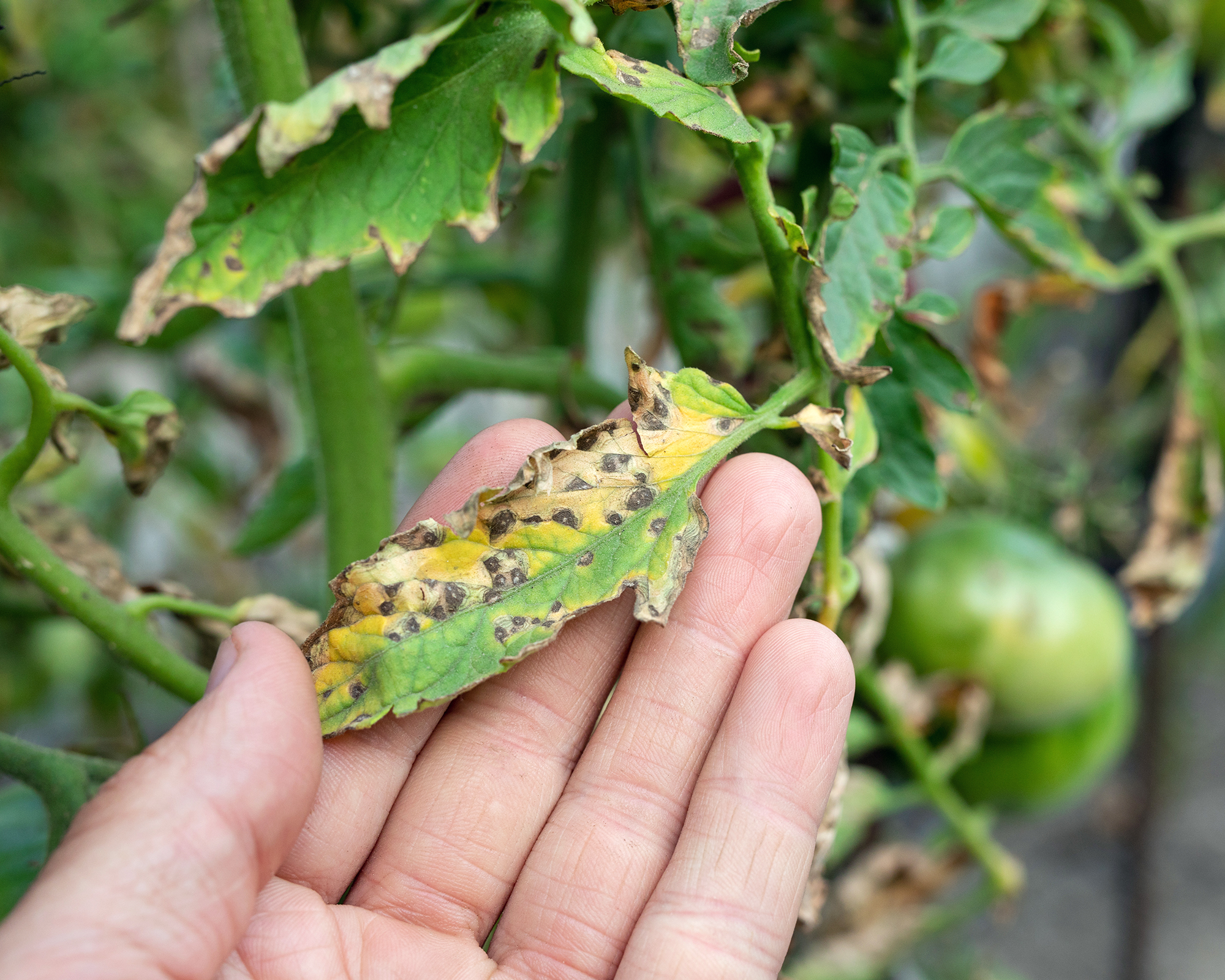
Septoria leaf spot – caused by Septoria lycopersici – is the most common blight on tomatoes, but is also the least harmful. It usually appears at the end of July after a period of wet, humid weather, presenting as small black or brown marks on the lower leaves. These cankers stress the plant and so it begins to shed leaves.
While fruits are usually uninfected, the leaf loss can affect yield, as well as exposing the fruit to sunscald. In severe cases, the plant is unable to photosynthesize and will die.
Removing affected foliage can slow the spread of the disease, as well as watering only at the base of plants. Chemical control should only be used as a last resort, but you can use a fungicide to treat septoria leaf spot. While this won't cure infected foliage, it will protect new growth. Once the disease has been diagnosed, apply every 7 to 10 days throughout the growing season.
Southern Blight
Southern blight of tomatoes is caused by the fungus Athelia rolfsii (Sclerotium rolfsii), which can survive in the soil and plant debris for years. It is fostered by high temperatures of 77 to 95°F (25 to 35°C) and moist conditions, and spread by moving infected plant material or soil.
The first symptoms appear on the lower stems at soil level as brown to black lesions that grow quickly and can girdle the stem. This rapid girdling will result in a sudden wilt of the entire plant. The lesions are usually accompanied by white mycelium, which, after a few days, becomes dotted with sclerotia.
Fruit may also become infected with yellowish, sunken lesions that become water-soaked and star-shaped. Within 3 to 4 days of infection, the fruit rots, accompanied by a foul odor.
Remove infected plants at the first sign of disease, burn them, and sanitize all equipment. If all else fails, fungicides can help to control the spread of the disease, though they are more effective when used preventively in problem areas.
How to Prevent Tomato Blight
An active blight infestation cannot be cured – only managed through good hygiene and, for certain types, applications of fungicide. Take preventative methods to minimize the risk of recurrence:
- Choose disease-resistant tomato varieties.
- Remove damaged lower leaves regularly since that's where most fungal attacks begin.
- Rotate crops for a period of 3 to 4 years with a successive non-nightshade plant.
- Keep the area free of plant detritus and potential host weeds.
- Remove all plant debris at the end of the growing season so the spores have nowhere to overwinter. Never turn any tomato debris back into the soil.
- Keep the soil and plants healthy with consistent plans for soil fertility and irrigation.
- When watering tomatoes, do not use overhead sprinklers; instead, opt for drip lines, soaker hoses, or hand watering at the base of the plant, taking care not to wet foliage.
- Stay away from the garden while foliage is wet from dew or rain.
- When possible, change your planting dates to avoid sowing or transplanting when weather conditions encourage the transmission of these diseases.
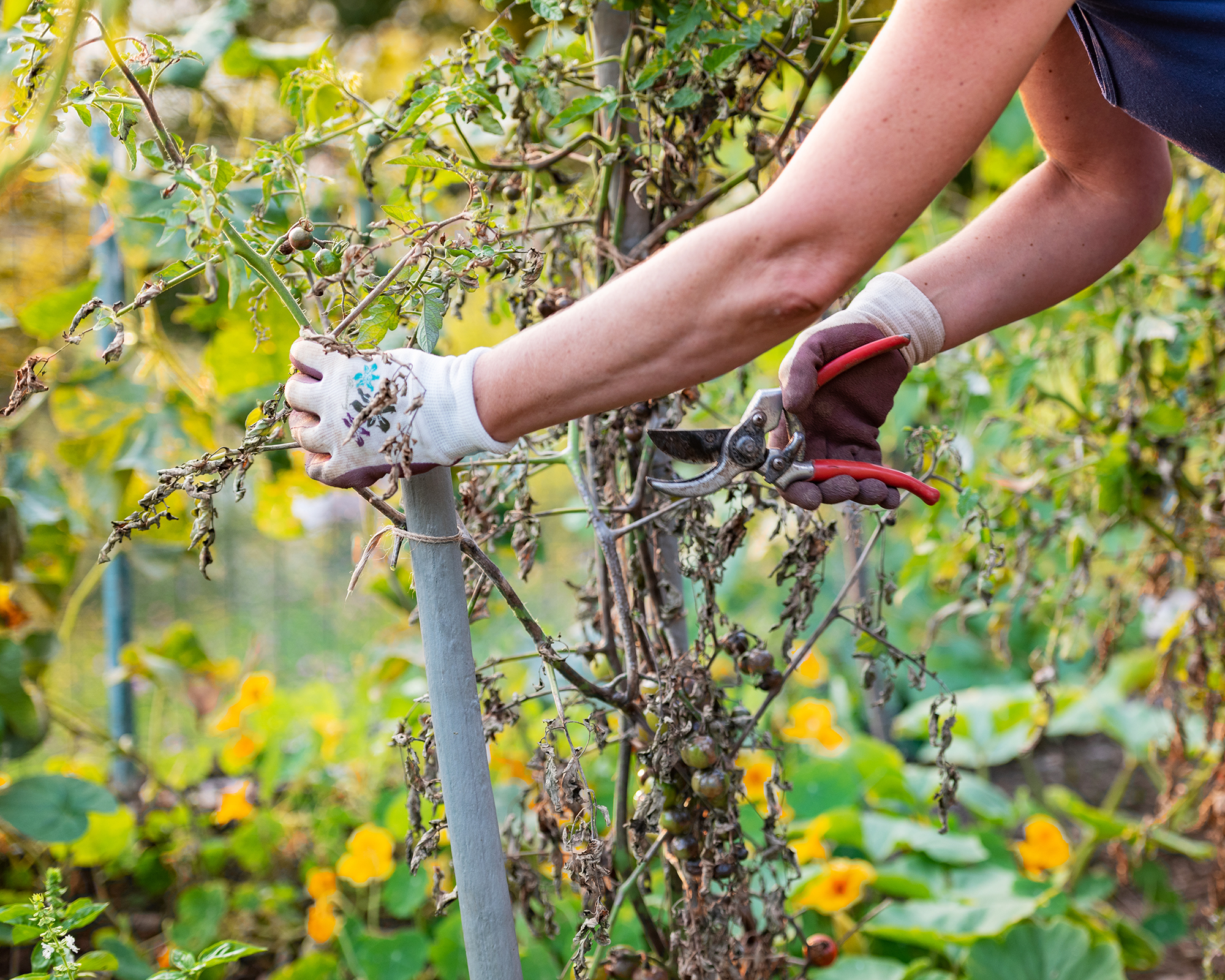
Can You Eat Tomatoes with Blight?
If the disease is not visible on the fruit, then it is safe to harvest and eat it, although it may spoil more quickly. While some gardeners will remove lesions from tomatoes and still eat the fruit, most find the idea unpalatable. Where only the earliest signs are present, you can cook with the tomato rather than waiting for it to fully ripen. But, if in doubt, throw it out.

Amy Grant has been gardening for 30 years and writing for 15. A professional chef and caterer, Amy's area of expertise is culinary gardening.
- Jackie RhoadesWriter
- Amy DraissDigital Community Manager
-
 Go Big With Containers In Small Spaces! 5 Easy Hacks For Big Garden Pots In Small Gardens
Go Big With Containers In Small Spaces! 5 Easy Hacks For Big Garden Pots In Small GardensThe temptation with small gardens and patios is to make containers and planting ideas small – but we say go big! Try these practical hacks for beautiful big garden pots in small gardens
-
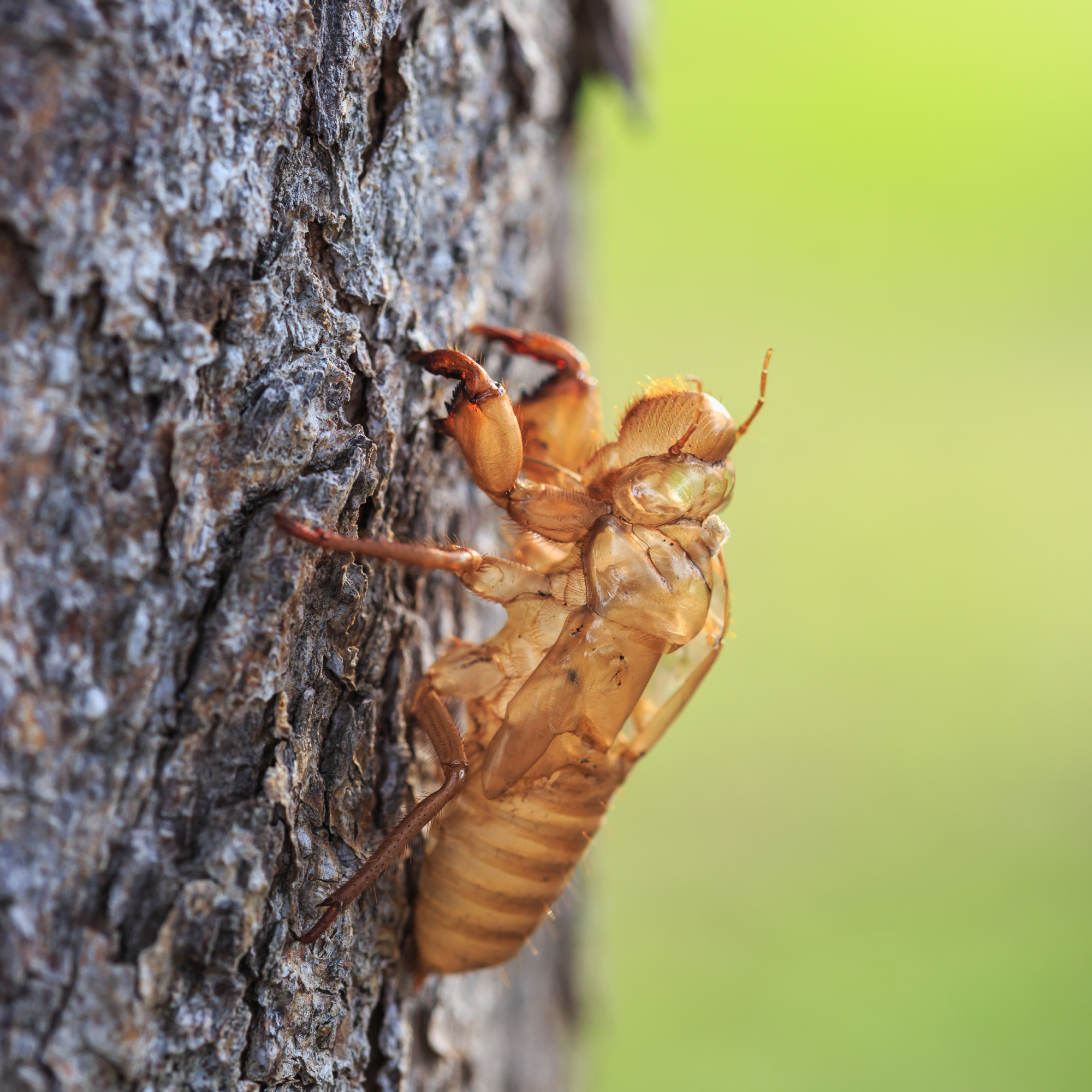 Not Sure What To Do With Cicada Shells Left By Brood XIV? Turn Them Into An All-Natural Fertilizer To Turbocharge Plants
Not Sure What To Do With Cicada Shells Left By Brood XIV? Turn Them Into An All-Natural Fertilizer To Turbocharge PlantsWondering what to do with cicada shells left lingering around your yard and garden? Turn the creepy carcasses into a nutrient-rich fertilizer plants will love!
-
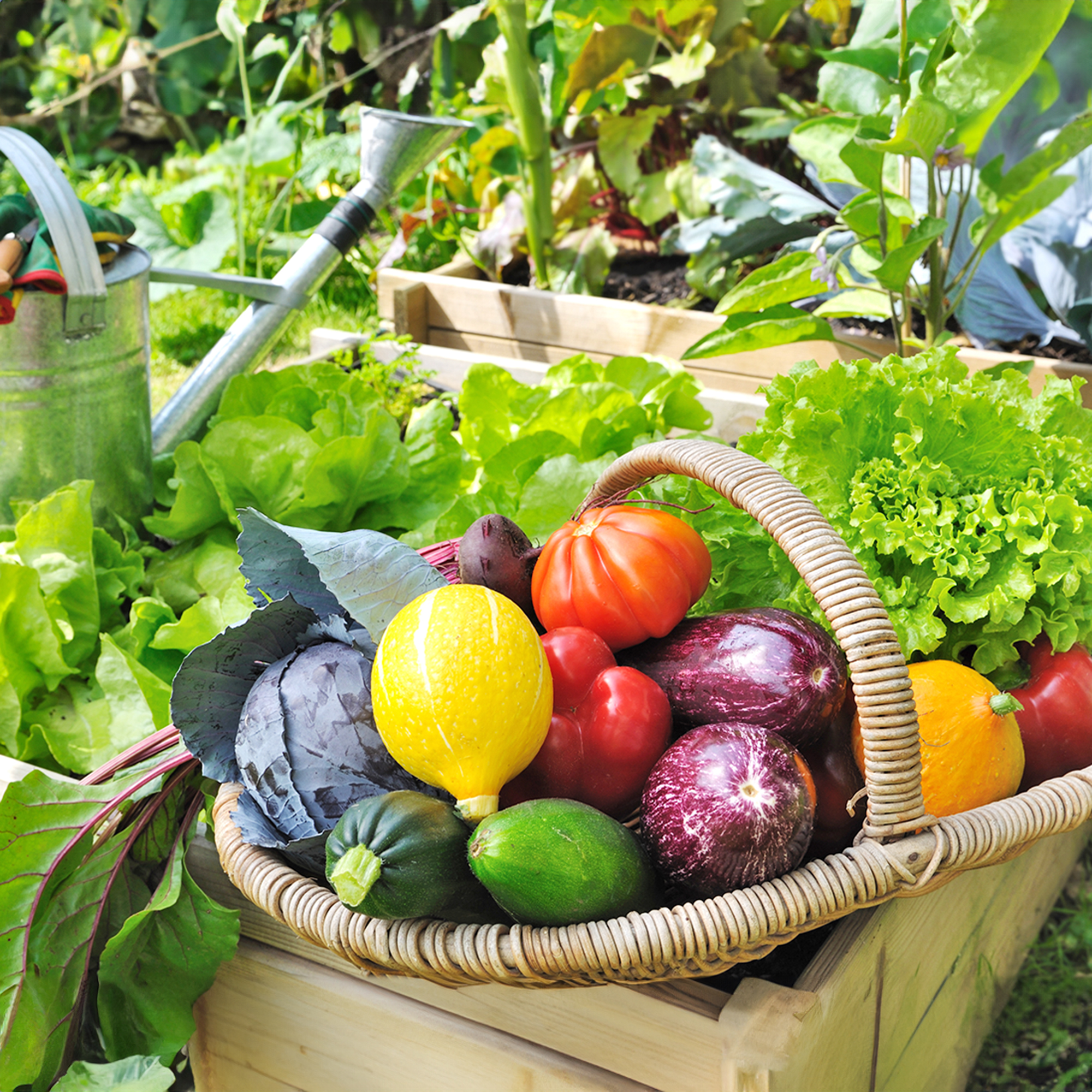 15 Best Vegetables To Plant In May For A Summer Bounty Of Fresh Homegrown Produce
15 Best Vegetables To Plant In May For A Summer Bounty Of Fresh Homegrown ProduceGet planting your dream garden with these best vegetables to start in May – including options for direct sowing, indoor seed-starting, and planting seedlings.
-
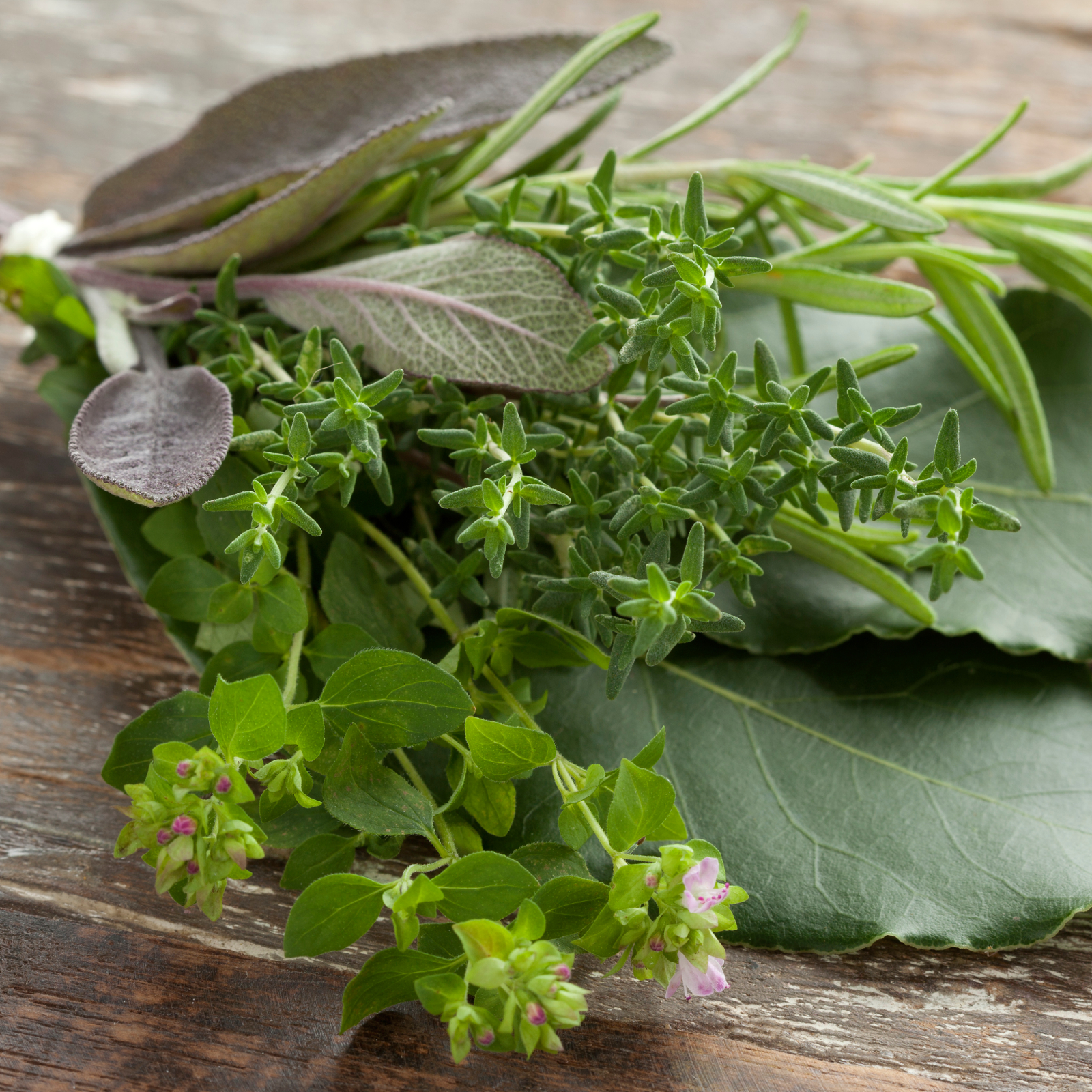 How To Make A Bouquet Garni Or Herb Bundle For Cooking
How To Make A Bouquet Garni Or Herb Bundle For CookingIf you’re a great cook, you may have made an herb bundle before. If this is a new idea, learn how to add sparkle and interest to your dish with a bouquet garni.
-
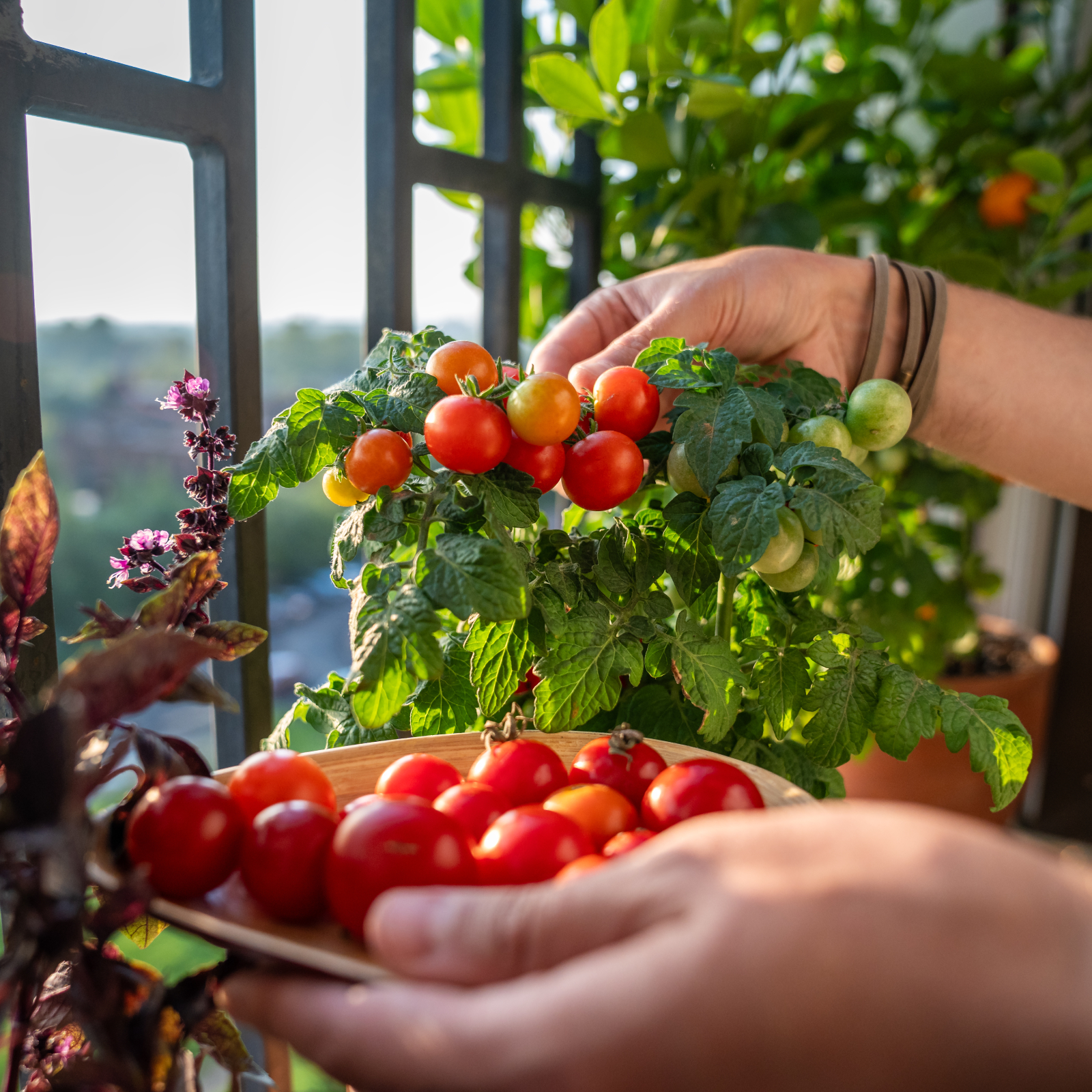 Best Tomatoes For Containers: 10 Tastiest Varieties For Plentiful Produce In Compact Areas
Best Tomatoes For Containers: 10 Tastiest Varieties For Plentiful Produce In Compact AreasThese are the best tomatoes for containers that prove you don't need to have a large space or elaborate garden to grow delicious produce.
-
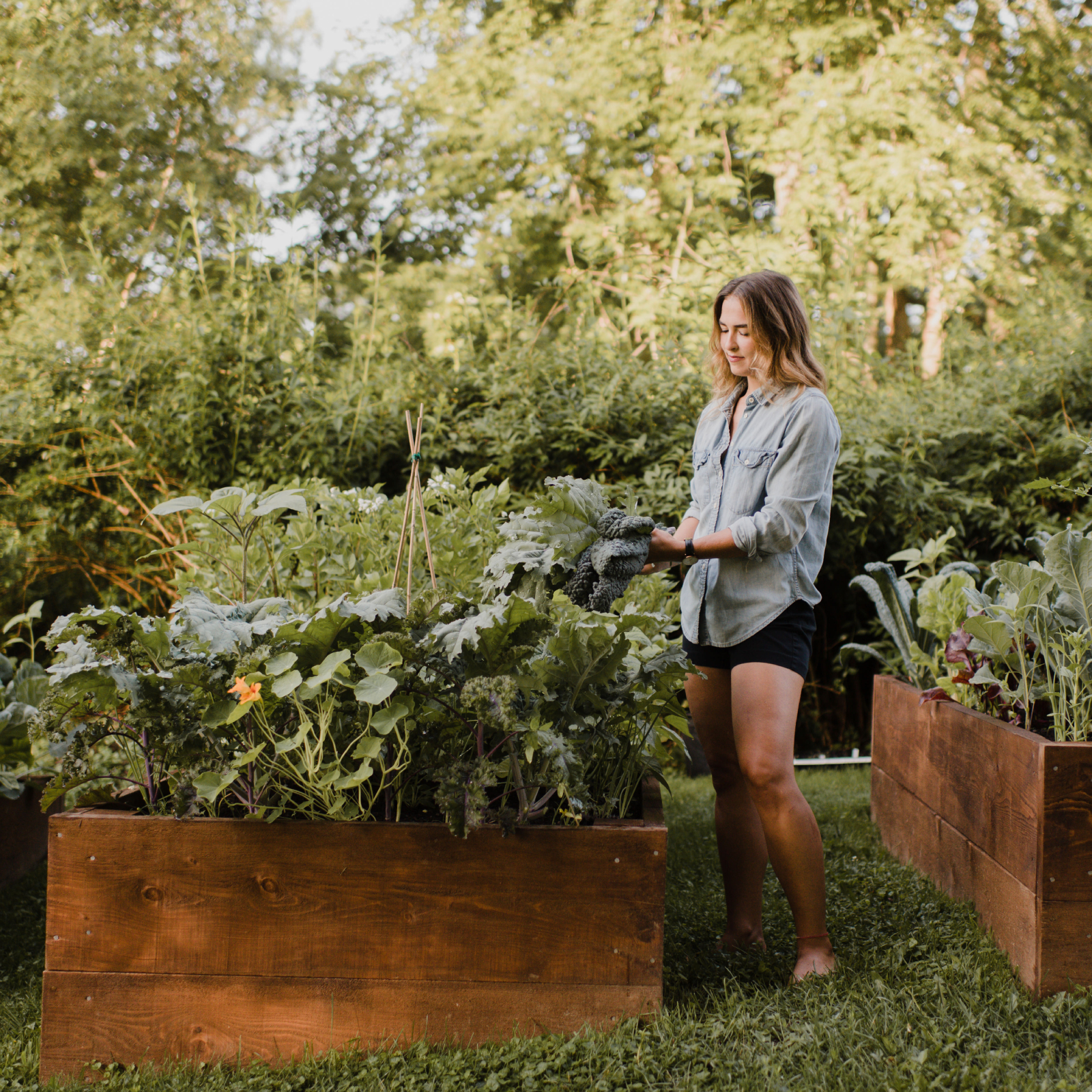 Raised Bed Garden Layout Ideas To Maximize Your Vegetable Harvest
Raised Bed Garden Layout Ideas To Maximize Your Vegetable HarvestCurious how to maximize your vegetable garden this year? Try these raised bed layout ideas and tips to get the most out of your space.
-
 Best Herbs To Plant With Tomatoes: 6 Perfect Companions For Better Flavor & Bigger Harvests
Best Herbs To Plant With Tomatoes: 6 Perfect Companions For Better Flavor & Bigger HarvestsCertain herbs make excellent neighbors to tomatoes in the vegetable garden, repelling pests, keeping down weeds, and enhancing flavor. Try these top varieties.
-
 7 Best Vegetables To Plant In February – And Start Harvesting From Early Spring
7 Best Vegetables To Plant In February – And Start Harvesting From Early SpringGet a head start on your garden with these delicious veggies. Plant now and you can begin enjoying home-grown harvests sooner than you think.
-
 How To Grow A Windowsill Full Of Veggies This Winter, According To A Top Gardening Expert
How To Grow A Windowsill Full Of Veggies This Winter, According To A Top Gardening ExpertAward-winning journalist and climate-resilient gardening expert Kim Stoddart reveals her top plant picks and tips for a productive winter windowsill garden.
-
 7 Perennial Herbs Perfect For Pots – Enjoy Aromatic Patio Harvests Year After Year
7 Perennial Herbs Perfect For Pots – Enjoy Aromatic Patio Harvests Year After YearDiscover the best perennial herbs to grow in pots. Ideal for small spaces, these low-maintenance plants offer year-round flavor and greenery on your patio.

